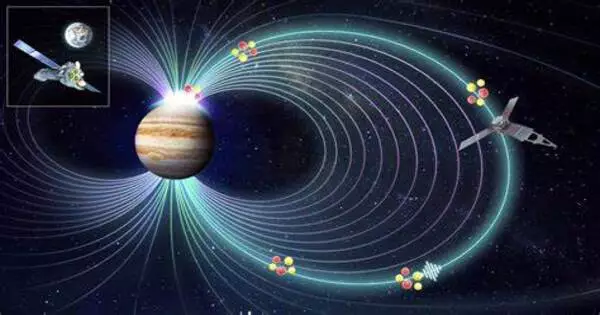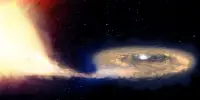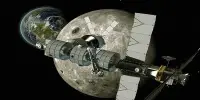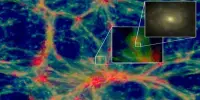Jupiter’s magnetosphere is formed by the planet’s powerful magnetic field, which is approximately 20,000 times stronger than Earth’s. This magnetic field interacts with the solar wind, which is a stream of charged particles (mainly protons and electrons) emitted by the Sun. The solar wind is deflected and compressed by Jupiter’s magnetic field as it reaches the planet.
Southwest Research Institute (SwRI) and The University of Texas at San Antonio (UTSA) researchers discovered that NASA’s Juno spacecraft, which orbits Jupiter, frequently encounters massive swirling waves near the boundary between the solar wind and Jupiter’s magnetosphere. The waves play an essential role in the transport of energy and mass from the solar wind, a stream of charged particles generated by the Sun, to planetary space habitats.
According to Jake Montgomery, a doctorate student in the UTSA-SwRI collaborative space physics program, these occurrences arise when a big differential in velocity forms across the boundary between two locations in space. This can result in a whirling wave, or vortex, near the magnetopause, the interface between a planet’s magnetic field and the solar wind.
Kelvin-Helmholtz instabilities are a fundamental physical process that occurs when solar and stellar winds interact with planetary magnetic fields across our solar system and throughout the universe. Juno observed these waves during many of its orbits, providing conclusive evidence that Kelvin-Helmholtz instability play an active role in the interaction between the solar wind and Jupiter.
Jake Montgomery
These Kelvin-Helmholtz waves are not visible to the naked eye, but they can be discovered with instruments that observe plasma and magnetic fields in space. Plasma, a fundamental state of matter composed of charged particles, ions, and electrons, is found everywhere in the cosmos.
“Kelvin-Helmholtz instabilities are a fundamental physical process that occurs when solar and stellar winds interact with planetary magnetic fields across our solar system and throughout the universe,” Montgomery said. “Juno observed these waves during many of its orbits, providing conclusive evidence that Kelvin-Helmholtz instabilities play an active role in the interaction between the solar wind and Jupiter.”
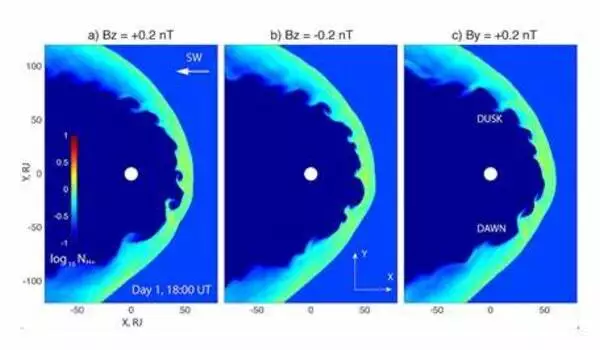
At the boundary of Jupiter’s magnetosphere, known as the magnetopause, various complex interactions can occur. One of these interactions involves the formation of shockwaves and turbulence as the solar wind is abruptly slowed down and redirected by Jupiter’s magnetic field. This can create swirling waves and disturbances in the surrounding plasma and magnetic fields.
Montgomery is the primary author of a research published in Geophysical Research Letters that makes use of data from several Juno instruments, including its magnetometer and the SwRI-built Jovian Auroral Distributions Experiment (JADE).
“Juno’s extensive time near Jupiter’s magnetopause has enabled detailed observations of phenomena such as Kelvin-Helmholtz instabilities in this region,” said Dr. Robert Ebert, a SwRI staff scientist and adjunct professor at UTSA. “This solar wind interaction is important as it can transport plasma and energy across the magnetopause, into Jupiter’s magnetosphere, driving activity within that system.”
